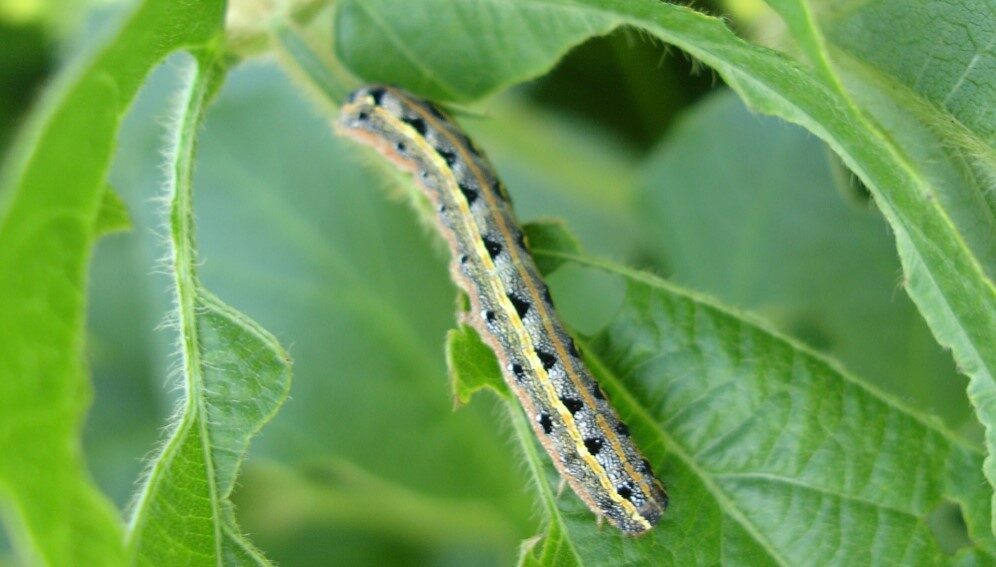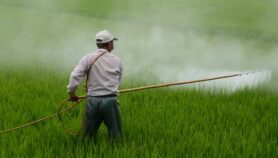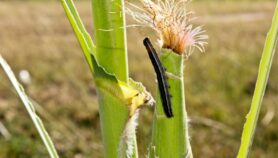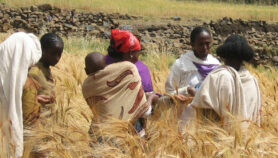01/03/22
New tech fights fall armyworm by letting offspring die

By: Vera Ouma
Send to a friend
The details you provide on this page will not be used to send unsolicited email, and will not be sold to a 3rd party. See privacy policy.
[NAIROBI] Scientists have developed a new technology that could control the devastating fall armyworm crop pest by releasing genetically-controlled males that suppress populations as subsequent offspring cannot survive, a study says.
The fall armyworm, Spodoptera frugiperda, which was detected in Sub-Saharan Africa for the first time in 2016, could lead to one-third maize yield losses in some countries and up to US$6.3 billion loss annually, according to the study published in the journal BMC Biotechnology.
The gene technology developed by Oxitec, a UK-based biotechnology company that genetically modifies insects to assist in insect control, enables production of male-only cohorts of the friendly fall armyworm that when released into farmer fields will mate with pest female fall armyworms, and their female offspring cannot survive, resulting in fewer pests on the crops and therefore less damage.
“When we have completed further product development, we will explore how we can make the product available to farmers.”
Kelly Matzen, Oxitec
“Crop pests continue to spread disease and devastate food production. Current management of these pests is highly reliant on just few tools, many of which have off-target ecological impacts, are vulnerable to resistance developing in the pest population, and are often limited in their effectiveness,” says Kelly Matzen, a co-author of the study, and Oxitec’s chief technology officer.
“There is, therefore, an urgent need for new pest management options that offer greater effectiveness and sustainability, and a lighter environmental footprint,” Matzen adds.
The pest is native to the Americas but has since spread rapidly across Africa, Australia, India and South-East Asia.

An initial three-year research phase, according to Matzen, enabled the early development of the friendly fall armyworm, and testing the competitiveness of the genetically-modified male-only cohorts of the pest against wild-type males.
“We are continuing the work and the current research phase is focused on conducting product development trials and product stewardship activities, conducting field trials in Brazil, and piloting scale-up of the technology,” she explains.



“For now, our focus with fall armyworm is on assessing the performance of the friendly fall armyworm in Brazil. When we have completed further product development, we will explore how we can make the product available to farmers in other regions.”
Improving control of fall armyworm could improve harvests for local farmers and protect their livelihoods, and has the potential to improve food security through the availability of corn grain for countries around the world, the study says.
But Ivan Rwomushana, a senior scientist and an invasive species management specialist based at the regional centre for Africa of CABI, the parent organisation of SciDev.Net, says that it will be difficult to deploy the Oxitec technology in Sub-Saharan Africa without the support of governments.
“The technology is so sophisticated for a farmer to understand, and also one cannot stop the self-limiting male pests from flying to the neighbours’ fields, making it hard to deal with the anti-genetically modified crowd who don’t want it,” Rwomushana tells SciDev.Net.
There are also regulatory issues, he adds, that have to be navigated to comply with the biosafety laws of each country the technology could be deployed in.
He explains, “This might even be harder for a self-limiting fall armyworm that is known to be a good flier. If a country like Kenya approved, and the insects were deployed in Western Kenya, what is to stop them from moving to Uganda, where the biosafety laws might be more stringent?
“I think there is still more research needed and this technology is still far off from field use.”
This piece was produced by SciDev.Net’s Sub-Saharan Africa English desk.













